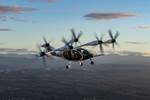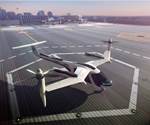Cirrus Aircraft breaks ground on new facility at McKinney Airport
The 45,000-square-foot expansion at Cirrus McKinney adds to the general aviation company’s service and storage hangar capacity, flight simulation and customer space.
Photo Credit: Cirrus Aircraft
Cirrus Aircraft (Duluth, Minn., U.S.), a personal aviation manufacturer that uses composite materials, has broke ground for its new facility at the McKinney National Airport (TKI) in the Dallas Metroplex in Texas. The new construction will expand upon current Cirrus McKinney operations and provide additional space for aircraft sales, flight training, factory service and aircraft management.
“The Dallas Metroplex is a central location for many of our SR Series and Vision Jet owners,” Todd Simmons, president of customer experience of Cirrus Aircraft, says. “With this new expansion at , we are excited to continue enhancing the aircraft ownership experience for our current owners and also create an environment to introduce more people to the benefits of personal aviation. We are proud to partner with the city of McKinney, McKinney Economic Development Corp. and McKinney National Airport and look forward to growing personal aviation in the Dallas Metroplex.”
Cirrus Aircraft plans to invest $13 million into the new 45,000-square-foot Cirrus McKinney facility. The expansion will include a 15,000-square-foot service hangar, 15,000-square-foot storage hangar, eight shade canopies, a flight simulation space, retail store and a customer lounge with a panoramic viewing balcony.
Today, Cirrus McKinney employs more than 50 team members and plans to continue adding more career opportunities in the future.
Related Content
-
Plant tour: Collins Aerospace, Riverside, Calif., U.S. and Almere, Netherlands
Composite Tier 1’s long history, acquisition of stamped parts pioneer Dutch Thermoplastic Components, advances roadmap for growth in thermoplastic composite parts.
-
Automated robotic NDT enhances capabilities for composites
Kineco Kaman Composites India uses a bespoke Fill Accubot ultrasonic testing system to boost inspection efficiency and productivity.
-
Industrializing additive manufacturing in the defense/aerospace sector
GA-ASI demonstrates a path forward for the use of additive technologies for composite tooling, flight-qualified parts.



